
This work describes an experiment that was carried out at the University of Jyväskylä to study the gamma spectroscopy of super heavy nuclei.
A long standing prediction of the nuclear shell model is the existence of an island of increased stability for spherical super heavy nuclei. Over the space of the last 30 years, a vast research programme has been conducted to produce these nuclei and study their properties.
However, no gamma spectroscopy was possible on these nuclei so far, as the production cross sections are very low. Indeed, no gamma spectroscopic information is available for any nucleus beyond Fermium (Z=100).
But even the predictions for the island of stability vary. As the diagram below [S. Cwiok et al, Nuclear Physics A611 (1996) 211] shows, some calculations show the potential well is deepest around Z ~ 114 and N ~ 182 (WS), while others (SkP and SLy7) predict the minimum to be centered around Z ~ 126 and N ~ 180 - 184.

It is therefore of the greatest importance to test the predictions of the models as close to the spherical super heavy nuclei as possible, and the most sensitive tests are given by gamma spectroscopy. To provide this data we studied 254No.
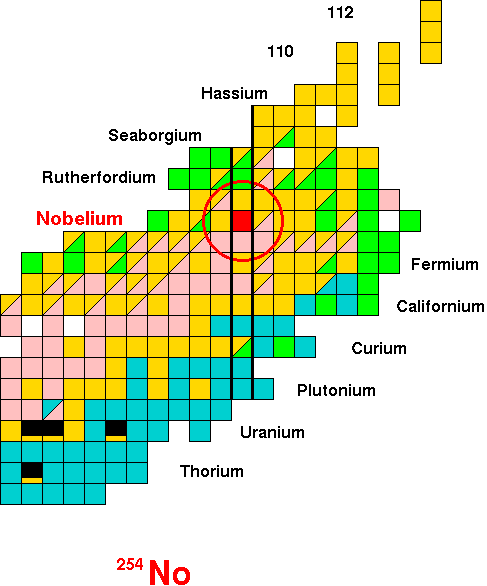
To pick out the very small production cross sections of less than 1 microbarn out of the huge background of ~1 barn, the Recoil Decay Tagging method (RDT) is an invaluable tool.
The recoiling Nobelium nuclei are separated from the beam in a magnetic spectrometer and implanted in a position sensitive silicon strip detector.
All gamma rays detected in coincidence with the recoil are recorded.
A subsequent alpha decay of the recoil at the same position then tags the recoil and thus the gamma rays.
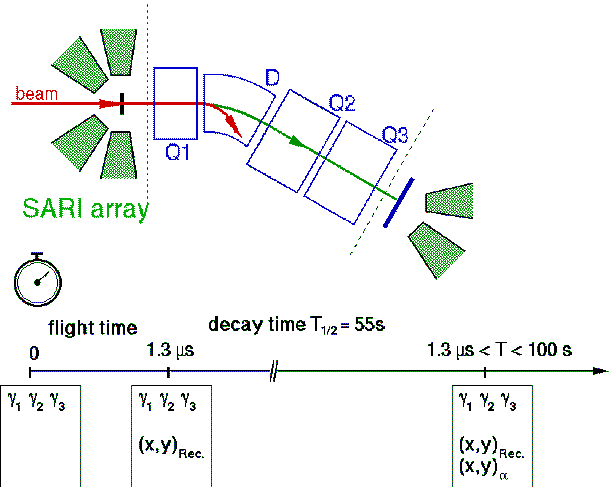
The reaction employed maximizes the production cross section. We used the cold fusion reaction 208Pb(48Ca,2n)254No to give a cross section of 2 microbarn.
The background from spontaneous fission was ~700 millibarns!
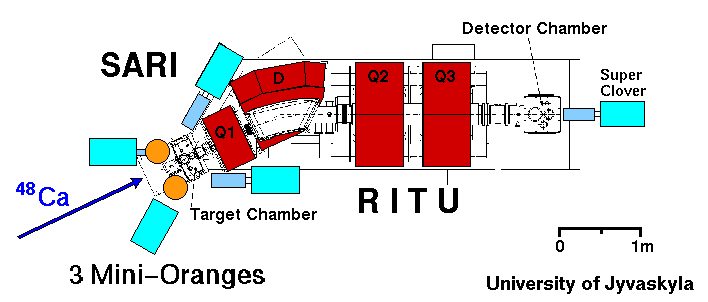
This spectrum shows the gamma rays in coincidence with the 254No recoils. The Nobelium (Z=102) X-rays are clearly visible, as is the rotational band built on the ground state.
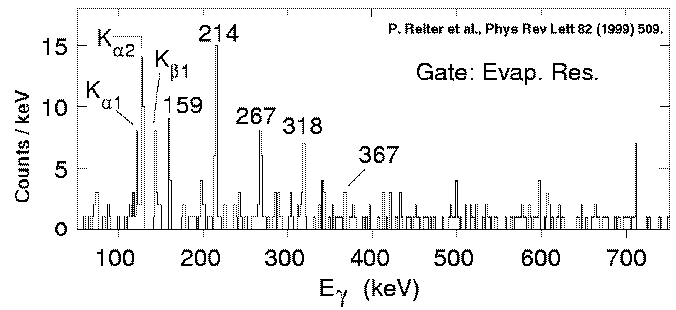
This spectrum is proof, that 254No is indeed deformed, as was predicted by theory.
The spectrum below shows the alpha decays of the recoiling nuclei in the focal plane of the separator. The alpha decay sequence
254No
 250Fm
250Fm
 246Cf
246Cf
 242Cm
242Cm
shows three distinct peaks.
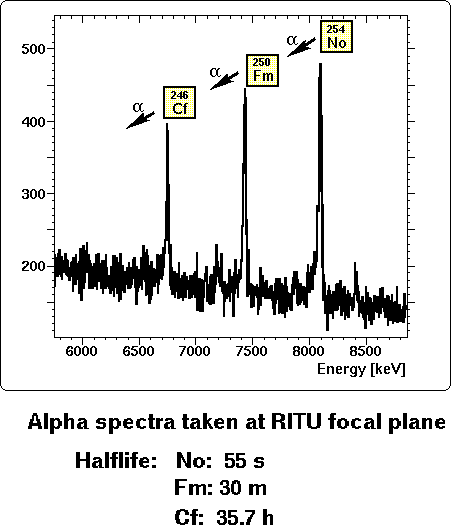
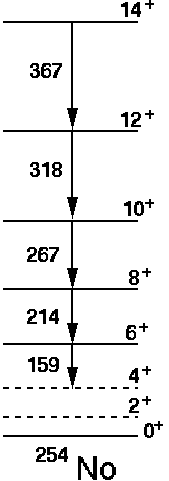
The picture above shows the deduced ground state band 254No. It has a very clean rotational structure and proves immediately that the nucleus is deformed.
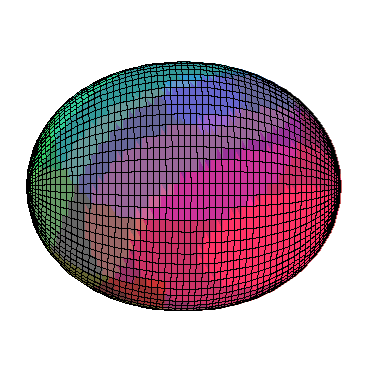
From systematics connecting the spacing of the levels with the quadrupole moment, a deformation can be deduced:
 = 0.27(2)
= 0.27(2)
This value agrees very well with predictions of
 = 0.246
= 0.246
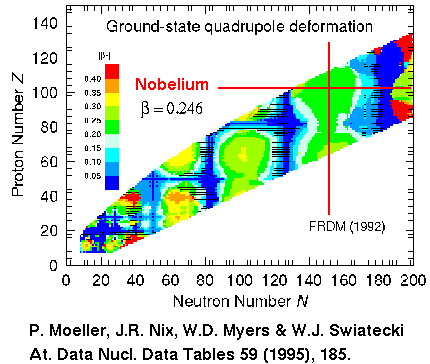
This initial success gives us hope that more studies in this
region will be possible in the near future!
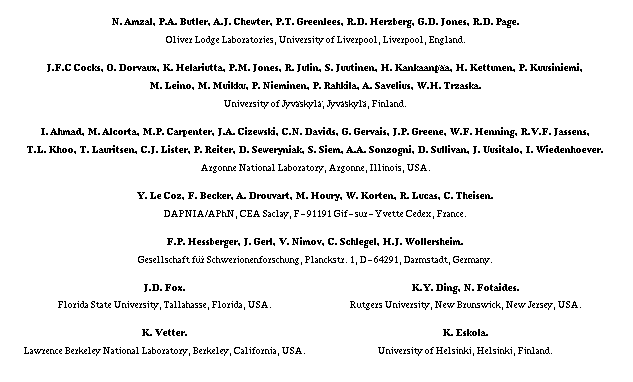
We gratefully acknowledge financial support by the EPSRC, the US DOE, the Finnish Academy of Science and the BMBF.
Last modified: 4 February 1999
Written by Rolf-Dietmar Herzberg, rdh@ns.ph.liv.ac.uk